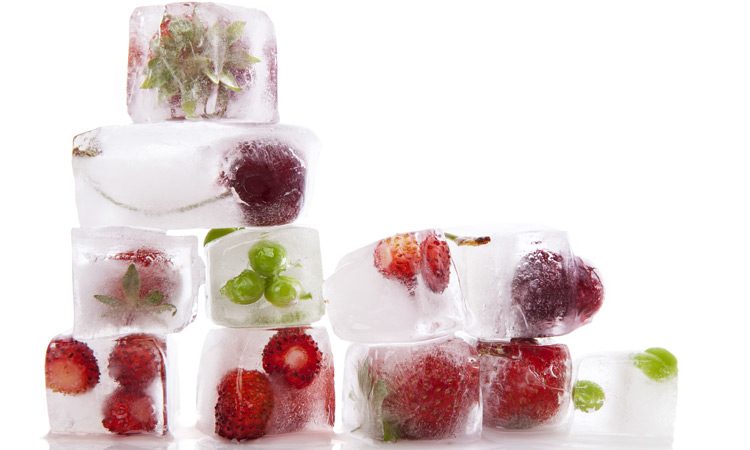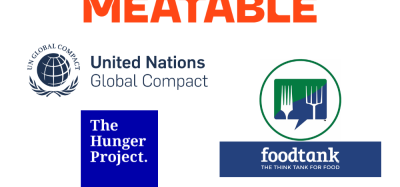Could frozen foods help reduce food waste?
- Like
- Digg
- Del
- Tumblr
- VKontakte
- Buffer
- Love This
- Odnoklassniki
- Meneame
- Blogger
- Amazon
- Yahoo Mail
- Gmail
- AOL
- Newsvine
- HackerNews
- Evernote
- MySpace
- Mail.ru
- Viadeo
- Line
- Comments
- Yummly
- SMS
- Viber
- Telegram
- Subscribe
- Skype
- Facebook Messenger
- Kakao
- LiveJournal
- Yammer
- Edgar
- Fintel
- Mix
- Instapaper
- Copy Link
Posted: 29 August 2019 | Darcy Simonis - Industry Network Leader for ABB’s Food and Beverage | No comments yet
With more than one billion tonnes of food wasted every year and a growing global population, devising ways to combat food waste is of the utmost important. Darcy Simonis, Food and Beverage Segment Network Leader at ABB, believes frozen foods hold the answer.


The Food and Agriculture Organization estimates that in developing countries, up to 40 percent of total food produced can be lost before it even reaches the marketplace. As such, implementing methods of safely storing and transporting food is crucial for being able to continue to sustainably feed the global population.
Food and beverage manufacturers understand that they must reduce food waste to improve profitability and their environmental impact. Freezing preserves food for long periods of time, particularly as food can be frozen either directly at the source or once it has gone through processing. This flexibility to preserve perishable food at the source is crucial across the globe. For example, in developing countries it is estimated that up to 50 percent of root crops, fruits and vegetables are wasted due to improper transportation and storage.
However, the process of producing frozen food is one of complexity. There are many different processes that are involved to deliver frozen food to the consumer market. Freezing, storing and maintaining temperature during transportation all require specialist technology to properly maintain the product and ensure that it is kept safe for consumption.
Freezing methods
Freezing is a well-established food preservation method, but if large ice crystal form within the products cells it can destroy the cellular membrane of the product. This can not only alter the thawed products taste but can potentially render it unsafe for consumption.
There are three main freezing methods: air blast, contact and immersion freezing. Each of these methods has a number of additional variants to cater for specific food types or cellular structures, which can affect the ability to freeze and subsequently thaw food correctly.
- Air blast freezing works by passing products through below-freezing air flows. Since air blast can freeze products whilst mobile, this method benefits rolling production.
- Contact freezing is when products are placed between two metal plates with internal cooling systems. This method is three times faster than air blast but is only suitable for products with two flat surfaces, such as prepackaged items.
- Immersion freezing requires products to be immersed or sprayed with liquid refrigerant. There are a variety of different refrigerant liquids available. However, the most common are liquid nitrogen or a mixture of ethanol and dry ice.
Regardless of the method, freezer components must be resilient enough to cope with the drastic temperature shifts between their interiors and exteriors. Furthermore, to maintain hygiene requirements in the food industry, freezers must be regularly and thoroughly cleaned as certain parts, such as paint, can corrode and contaminate the food products.
Cold supply chains
Cold supply chains are one of the primary methods for transporting items that must be kept at a constant cold temperature. In a cold supply chain, every part of storage and transportation is temperature controlled to stop products from decaying. Food products can be very sensitive to temperature fluctuations, with sudden changes often leading to premature spoilage.
In fact, research demonstrates that there are several key variable factors in the food spoilage process: pH, water activity, salt content, gas composition, pressure, humidity and temperature. Of these, temperature is the biggest issue, as when a product is stored above its individual temperature limit it can encounter rapid bacteria growth which accelerates decay.
Modern food supply chains are also long, meaning that keeping produce at a constant temperature is vital. However, due to the rigorous standards that implementing a cold supply chain necessitates, they are not wholly accessible. This is because the range of temperatures at which products must be kept is narrow, so any deviation and the produce will be deemed unsafe, and thus, rejected. As such, the cold system must be able to be monitored and controlled from start to finish.
Therefore, paper controls and monitoring are not sufficient for the precision needed for cold food supply chains, due to only being able to register an average temperature. Accurately controlling the temperature inside cold storage requires a smart system because multiple sensors can record and analyse a constant temperature.
Consider, for example, a refrigerated container being kept at minus 8°C to store frozen fruit. If one of the cooling systems was to malfunction, a paper-based system would only register a slight anomaly in temperature variation. A smart sensor-based system, however, would be able to identify more precisely which cooling system was malfunctioning and directly recognise the affected packages as well as alert maintenance and monitoring teams.
Overall, freezing is an extremely flexible method of preventing food waste. It can cater for all types of food and, though intricate, the tools for implementing cold supply chains are prevalent and widely accessible.
Extending the life span of food products on the market is a method that will tackle the issue of our growing global population and increasing rates of food consumption.
Related topics
Environment, Food Security, Food Waste, Frozen Foods, Refrigeration and freezing, Shelf life, Supply chain, The consumer









